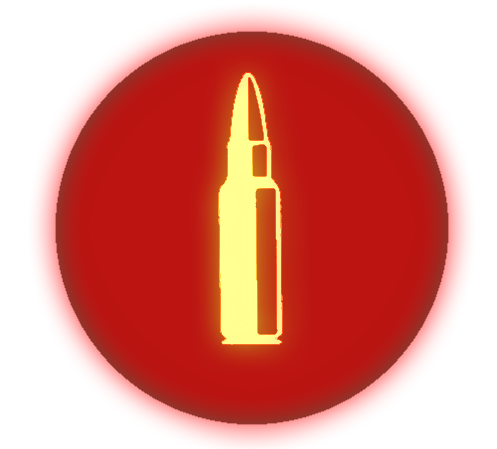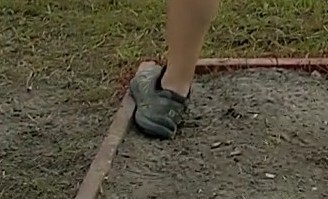So, you want to buy a gun. Which gun should you buy? There are so many!
To answer that question, you first need to answer: which caliber are you shooting? And to answer that, you need to answer the following:
**What are you shooting? **
Squirrels? Coyotes? Deer? Elk? People?
**What distance? **
20m? 50m? 100m? 300? 800? 1000? 3000?
Let’s start with what. Choosing what you want to shoot will determine the distance.
If it’s squirrel and small game up to the size of a bunny, it would take only roughly 10 ftlbs of energy to dispatch. However, it presents a very small target, so you would need to be up close or very accurate. Small game can only be reliably taken up to 100m.
So, viable calibers include rimfire calibers, air rifles and shotgun pellets. A well set up slingshot can produce 6-8 ftlbs of energy, which is barely enough to take small game.
Coyote and deer necessitates a larger cartridge. Generally they need 100 ftlbs of energy to take down reliably. And even then, shot placement is crucial. So, this moves you up to pistol calibers, straight wall cartridges, and intermediate cartridges. Some air rifles meet this requirement.
Humans fall within this category.
Because of a larger hit area, the maximum range is moved out further to 500m. Though if full sized or magnum cartridges and/or specialized guns are used, this can be pushed out to 1 km.
Larger deer and elk necessitate at least 1000 ftlbs of energy. This moves you up to full sized cartridges like 308 Winchester, 7.62x54R, 30-06, 7mm winmag, etc. At this point, the range is dependent on your accuracy. But if a magnum cartridge like 338 lapula or 6.5 PRC is used, it can be pushed further.
Cartridge and accuracy.
Faster moving, slimmer cartridges are more accurate than their fatter analogues of similar energies. I’m not entirely sure of the sciences behind it, but it is a trend I’ve noticed.
17 hmr is more accurate than 22 wmr.
223 is more accurate than 7.62x39
30-30 is more accurate than 45-70
6.5prc is more accurate than 308.
More accuracy not only means longer range, but also means you can punch above its weight class, as you can more effectively target organs.
However, heavier bullets are more accurate at longer distances because they negate wind.
So, if you want the ultimate accurate bullet, then it needs to be long, fast, and heavy, like the 50 bmg.
guns and accuracy
The more money you spend, the more accurate your gun will be.
What you’re spending money on is the following:
- Precise chamber tolerances. How the chamber holds the bullet and how it precisely and accurately aligns the bullet with the rifling has a big effect on accuracy. Not only should the chamber consistently align the bullet the same way every time (precision), but the axis of the bullet should be at the same angle and with zero offset to the axis which it’s going to be rifled (accuracy).
.
- Crown. The end of the barrel and how it terminates. How well the crown is made affects accuracy greatly
.
- Action and cycling. Whether it’s bolt or semi-auto, loading rounds from a magazine, when too much force is used, will deform the round and misalign the axis of the bullet from the axis of the cartridge. The accuracy standard is bolt action and hand fed loading is considered the most accurate.
The reason that semiautomatic is considered to be less accurate than bolt is that to increase reliability, the design of the chamber is looser, and the action and cycling is performed with more force than bolt action.
- Stock, ridgity and resonance. I’m going to consider this the final item because it doesn’t affect accuracy all that much. But as your gun shoots, the forces the bullet imparts will resonate the barrel, and cause it to slightly deform. And increasing the ridgity of the stock will cause it to deform the same way every time, giving it more consistency. This is also where barrel length comes into play. A longer barrel will resonate more, but a shorter barrel will result in a slower, less accurate bullet
Accuracy and you. Expectations and practice
If you’re into fun culture, you’ll encounter 1 moa as the standard for accuracy. This is a lie. Most guns you get off the shelf will typically shoot 2-3 moa on average with bulk ammo. That’s including bolt actions and precision rifles.
If you want to get sub-moa, then not only will you need a precision rifle, but also either match grade ammo or custom reloaded ammo suited to your gun. For rimfire, you’ll need to do extensive testing to find the type of ammo that shoots best. And even then, it’s rare to find a pairing that shoots below 1 moa.
The point of saying this is: don’t get upset because you’re not getting tiny groups. It’s probably not you, it’s how your gun is set up.
So how do you actually shoot a gun accurately?
Avoid using your muscles as much as possible. The more you use your muscles, the shakier you are in aiming. Every joint between the earth and the gun is a source of deviation. So if you can, lean against something to steady your aim. prop your gun up using branches or tables. Use something solid like spare magazines to prop up the stock if you’ve already rest the barrel.
If you don’t have anything to rest against, I recommend the crossed legged sitting position. You’re essentially leaning against your legs, which stabilizes your upper body, as long as you’re able to relax all your muscles.
If you don’t have time to get into position, you can use something called the hasty sling, where you use the sling to pull the gun against your arm, and you can relax some muscle groups to get a more accurate shot.
But nothing beats practice.
223 is more accurate than 7.62x39
*At longer distances, not inherently more accurate
The 223 has slightly less wind drift up to 500 yrds, and less bullet drop by nature of its velocity.
500 yrds is roughly the effective range of both these cartridges.
That depends on the barrel length, however, all combat happens inside 400yrds so the difference is marginal at best.
Faster moving, slimmer cartridges are more accurate than their fatter analogues of similar energies. I’m not entirely sure of the sciences behind it, but it is a trend I’ve noticed.
This is bad science.
All I know is that:
- Higher velocity decreases time in flight, which decreases the effects of wind and gravity.
.
- According to the miller stabilization formula, in order to increase the velocity but to not overstabilize, is to increase the length of the bullet.
.
- I spend the last three days watching people shoot groups on YouTube of 22wmr vs 17 hmr, with 17 hmr having significantly smaller groups on average. The two cartridges have roughly the same order of energy. Forums also say that 17 hmr is a very accurate cartridge.
.
- When fired from a longer rifle barrel, 357 magnum has energy on par with 223. But we never see similar accuracy results.
.
- The 6mm ppc was designed for benchrest (railgun) competition shooting. While the 300 winmag pushes a heavier bullet at similar speeds, with a larger diameter, it’s not able to reach the same standards of accuracy. The 6mm ppc shoots a bullet with a length to width ratio of 4.7, while the 300 winmag shoots 4.54.
.
when the variables from the shooter and the gun are randomized, we can see that some cartridges shoot better than others. From what I’ve seen, these cartridges are typically faster shooting and are longer.
Accuracy at longer ranges is essentially just small caliber high velocity cope to make up for increased deflection that small grain loads suffer from. It’s better to have a bigger bullet because combat ranges aren’t far enough to make a difference anyways, this is why you see Grendel and .300blk trends, which are essentially just 7.62x39 with extra steps.
This discussion isn’t limited to combat.
You’re right that in cqc or when noise discipline is important, running a subsonic heavier bullet will have more effect on target. And that is the reason behind 300 blk. In combat, speed matters more than accuracy, because even if the shot isn’t fatal, it greatly reduces your opponent’s ability to return fire.
But the 6.5 Grendel was made to have a 6mmPPC feed reliably into an AR platform. Compromising between a 5.56 and. 7.62 bullet meant more weight to negate the effects of wind, and greater velocity down range so it doesn’t drop below subsonic speeds past 1000 yrds, the transition of which affects accuracy.
But the reason for this post isn’t to just provide a guide for your next or first firearm for defence, but also for target shooting or hunting. And in most civilian cases, especially when ammo costs an arm and a leg, accuracy is pretty important.
If you want semi cheap ammo 9mm & 5.56/.223 are good ways to go if you’re target shooting.
.22 is the absolute cheapest though.
I have a table for this.
9mm goes for 50 cents per round, .223 and .308 goes for 80 cents per round. Even if you’re buying bulk. In Canada.
22 goes for 20-50 cpr, depending on match grade or not. 17 hmr goes for 50-60 cpr, and IMO, has the best performance for your money.
Ammo availability is one thing, but ballistic performance is another. You can’t take out small game with 223 or 308. 9mm is not a very accurate round either.
Good grief. Canada prices are high.
In the States I think .22 is like 5-10 CPR



